Growth Employment
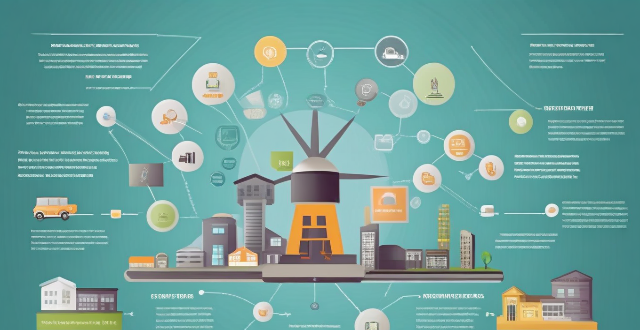
What impact does energy transition have on employment and job creation ?
The energy transition from fossil fuels to renewable sources significantly impacts job creation and employment. This shift brings growth in renewable energy sectors, green economy expansion, research & development, infrastructure development, and energy efficiency services. However, it also causes employment shifts such as a decline in fossil fuel industries, skill transition, geographical impact, supply chain effects, and policy-driven changes. Managing these challenges through strategies like reskilling programs and supportive policies is crucial for a just and equitable energy future.

What is the relationship between economic recovery and employment rates ?
The relationship between economic recovery and employment rates is influenced by various factors such as increased aggregate demand, investment in the economy, government policies, and global factors. As the economy recovers, businesses start hiring more workers to meet the growing demand for goods and services, leading to an increase in employment rates. However, this relationship is complex and requires a deeper understanding of the different aspects involved.

What role do environmental organizations play in promoting climate-friendly employment ?
Environmental organizations are crucial in promoting climate-friendly employment through various roles including advocacy and policy influence, education and training, research and data collection, direct action and intervention, and collaboration and partnership building. They lobby for green policies, promote corporate responsibility, collaborate internationally, raise public awareness, offer skill development programs, partner with educational institutions, analyze employment trends, study economic impact, document success stories, fund sustainable projects, work with local communities, build NGO capacity, organize networking events, partner with government agencies, and form alliances with businesses. These efforts help create a more sustainable future while ensuring job security and economic prosperity for communities around the world.
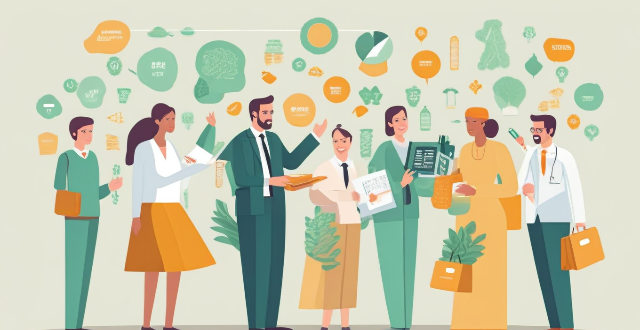
Which economic indicators are used to measure the health of the labor market ?
The health of the labor market is crucial for any economy, and several economic indicators are used to measure it. These include the unemployment rate, employment growth, labor force participation rate, wage growth, and job openings and vacancies. The unemployment rate measures the percentage of the labor force that is unemployed but actively seeking work, while employment growth refers to the number of new jobs created over a specific period. The labor force participation rate measures the percentage of working-age individuals who are either employed or actively seeking employment, and wage growth reflects the earning power of workers. Job openings and vacancies provide insight into the demand for labor within the economy. By monitoring these indicators regularly, stakeholders can identify trends and potential issues early on, allowing them to take proactive steps to address any challenges and promote a healthy labor market.

How do extreme weather events caused by climate change affect employment rates ?
This article explores the impact of extreme weather events caused by climate change on employment rates in various sectors, including agriculture, construction, and tourism. It highlights the vulnerability of these sectors to extreme weather events such as droughts, floods, heatwaves, hurricanes, tornadoes, wildfires, storms, rising sea levels, and reduced snowfall. The article also discusses potential mitigation strategies that can help reduce the impact of these events on employment rates in the affected sectors.

How does self-employment affect my personal income tax calculation ?
Self-employment affects personal income tax calculation by requiring net income reporting, quarterly estimated tax payments, utilizing deductions and credits, filing specialized forms, and paying self-employment tax. Staying organized and informed about tax laws is crucial for effective tax management.

What is the impact of climate change on agricultural employment ?
Impact of Climate Change on Agricultural Employment: - Reduced Crop Yields due to droughts, floods, and loss of biodiversity can lead to job losses. - Changes in Cropping Patterns, such as shifting to new crops or shortened planting seasons, may require different skillsets and reduce employment opportunities. - Increased Pest and Disease Pressure can result in more labor for monitoring and management but also potential job losses from crop failures. - Infrastructure Damage and Displacement caused by extreme weather events can affect farming operations and employment levels. - Adaptation and Resilience Efforts, including developing resilient crop varieties and adopting sustainable farming practices, can create new job opportunities.
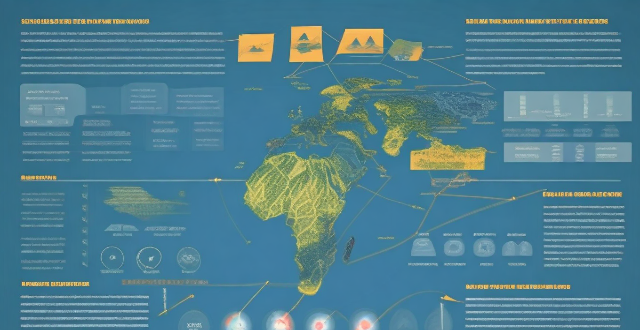
How does climate change influence the future of remote work and virtual employment ?
The article discusses the impact of climate change on the future of remote work and virtual employment. It states that rising temperatures, extreme weather events, and environmental concerns are driving factors for the shift towards remote work arrangements. As a result, there is an increasing demand for remote work options, technology advancements to support virtual employment, and a changing work culture that focuses on results rather than physical presence. The article concludes that embracing these changes can lead to a sustainable and efficient future of work.
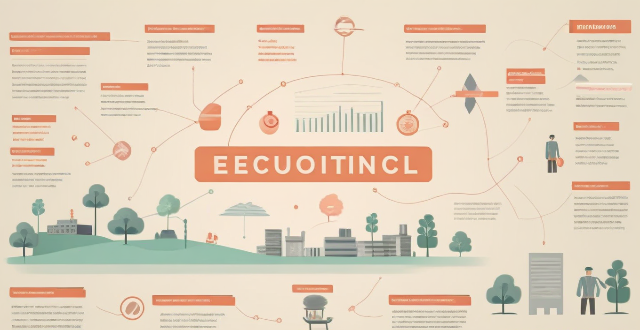
How does climate cooperation impact global economic growth ?
Climate cooperation has a positive impact on global economic growth by fostering new industries, promoting international trade and investment, stimulating innovation and research, enhancing resilience against climate impacts, and encouraging policy coherence and stability.

How do environmental subsidy policies impact economic growth ?
The text discusses the impact of environmental subsidy policies on economic growth, highlighting both positive and negative effects. Positive impacts include stimulating innovation and technology development, enhancing energy efficiency, creating job opportunities, and improving public health. Negative impacts encompass distorting market incentives, increasing government expenditures, potential for carbon lock-in, and global trade implications. It concludes that while environmental subsidies have the potential to foster economic growth, they must be carefully designed to avoid adverse effects and contribute positively to sustainable economic development.

How does green employment contribute to sustainability ?
Green employment, or green-collar jobs, are essential in achieving sustainability by promoting environmentally friendly practices, enhancing social well-being, and fostering economic growth through innovation and job creation. These jobs focus on renewable energy, waste reduction, sustainable agriculture, ecotourism, and more. By embracing these sustainability careers, we can build a resilient future for all.
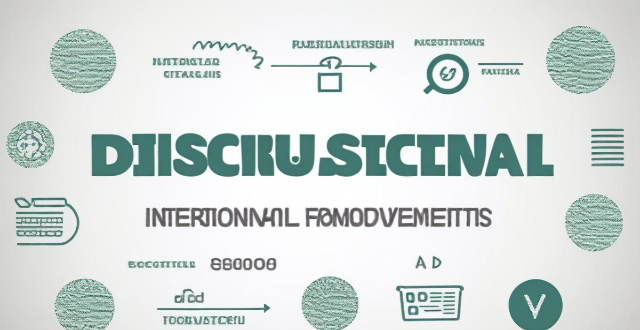
What role do international aid and foreign investments play in the economic growth of low-income countries ?
The text discusses the crucial role of international aid and foreign investments in promoting economic growth in low-income countries. It highlights how these two factors contribute to development by providing financial resources, technical expertise, and market access. The text also emphasizes the need for effective and transparent use of these resources to maximize their impact on sustainable economic growth.

Can economic growth be compatible with sustainable development ?
Economic growth and sustainable development can coexist through strategies such as promoting green economies, inclusive growth, regulation and policy, technological innovation, and international collaboration.

What impact do circular economy policies have on employment opportunities ?
Circular economy policies can have a significant impact on employment opportunities across various sectors, with both positive and negative effects. Job creation in recycling and waste management, growth in green technologies, support for small businesses and startups, and education and training programs are some of the positive impacts. However, displacement of workers in traditional industries, skill gaps and reskilling challenges, and economic disruption and market uncertainty are some of the negative impacts. Policymakers should consider both the positive and negative impacts when designing and implementing circular economy strategies to ensure that overall employment opportunities are maximized while still achieving environmental goals.
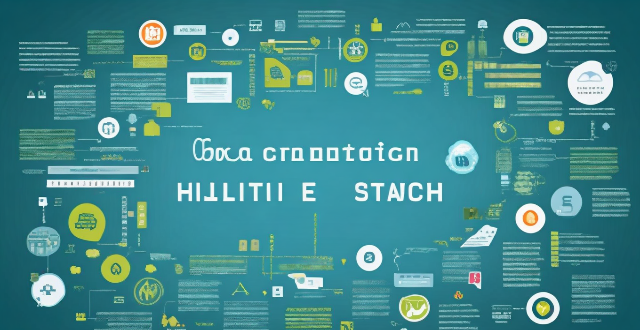
What are the key economic indicators to watch for global growth ?
Monitoring key economic indicators such as GDP, inflation rate, unemployment rate, interest rates, trade balance, current account balance, manufacturing and service sector indexes, stock market performance, and consumer confidence indices is crucial for policymakers, investors, and businesses to understand global economic growth. These indicators provide insights into the overall health of an economy, guide decision-making processes, and help predict future trends.

What is the ideal temperature for indoor plant growth ?
Indoor plants generally thrive in temperatures between 65°F to 75°F during the day and slightly cooler at night, along with proper humidity and air circulation. Maintaining these conditions helps promote healthy growth and flowering. Use a thermometer, avoid drafts, and adjust heating or cooling as needed to keep plants comfortable.

What is the impact of technology on future employment opportunities ?
The Impact of Technology on Future Employment Opportunities Technology has had a significant impact on the job market, and this trend is expected to continue in the future. Here are some ways technology will affect employment opportunities: - Increased Automation: As technology advances, many jobs that were previously done by humans are now being automated. This means that there will be fewer jobs available for people in industries such as manufacturing, transportation, and customer service. However, new jobs will also be created in areas such as robotics, artificial intelligence, and data analysis. - Remote Work: The rise of technology has made it possible for people to work from anywhere in the world. This has led to an increase in remote work opportunities, which can be beneficial for both employers and employees. Employers can save money on office space and other expenses, while employees can enjoy more flexibility and a better work-life balance. - Digital Skills: As technology continues to evolve, there will be a greater demand for workers with digital skills. This includes not only programming and software development but also skills related to cybersecurity, digital marketing, and social media management. Those who have these skills will likely have an advantage in the job market. - New Industries: Technology is constantly creating new industries and job opportunities. For example, the rise of e-commerce has led to the creation of new jobs in online sales, digital marketing, and logistics. Similarly, the growth of renewable energy sources has created new jobs in solar panel installation and maintenance. In conclusion, technology will have both positive and negative effects on future employment opportunities. While some jobs may become automated or obsolete, new jobs will also be created in industries that didn't exist before. It's important for workers to stay up-to-date with changing technology trends and develop the necessary skills to remain competitive in the job market.

How will automation affect employment in the coming years ?
Automation is expected to have a significant impact on employment in the coming years, with potential job displacement and income inequality challenges. However, it also presents opportunities for job creation and a shift towards more creative and analytical roles. Skills such as creativity, critical thinking, and emotional intelligence will become increasingly valuable, while continuous learning and adaptability will be crucial for workers to stay relevant. Policy interventions are necessary to mitigate inequality and support an adaptable and resilient workforce.
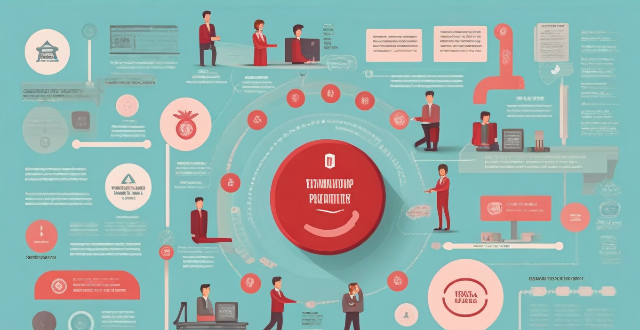
How do green jobs impact economic growth ?
Green jobs can stimulate economic growth by creating new employment opportunities, driving innovation and technological advancements, reducing costs and improving efficiency, enhancing environmental quality and public health, and attracting investment and tourism dollars.
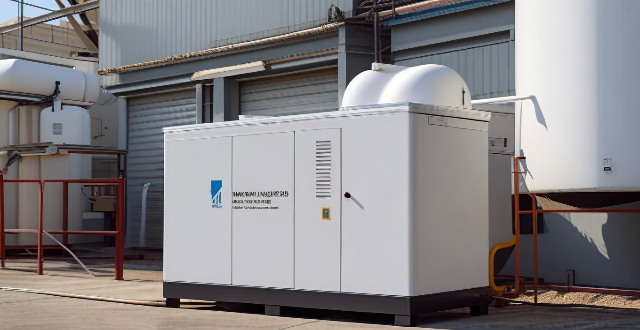
How do changes in immigration policy influence economic growth ?
Changes in immigration policy can have a significant impact on economic growth by increasing the labor force, promoting diversity, increasing consumer spending, reducing wage inflation, and increasing tax revenue.
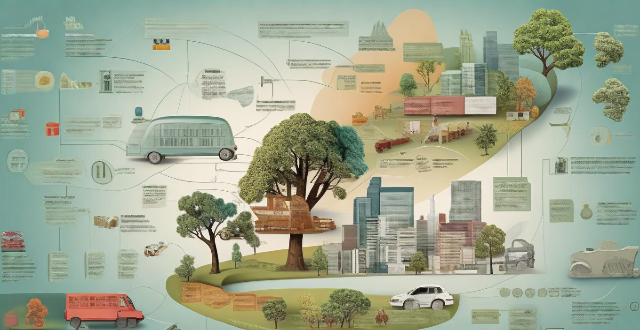
What is an economic stimulus plan ?
An economic stimulus plan is a government policy aimed at boosting a country's economy during times of slow growth or recession. The primary goal of such plans is to increase consumer spending, encourage business investments, and create jobs, thereby stimulating economic activity and promoting overall growth. Key features of an economic stimulus plan include tax cuts and rebates, government spending on infrastructure projects, monetary policy adjustments, direct assistance to businesses and individuals, and incentives for investment. Benefits of an economic stimulus plan include increased economic growth, job creation, long-term gains, and reduced poverty rates. However, potential downsides of an economic stimulus plan include national debt, inflation risks, crowding out effect, and short-term vs long-term effects. In conclusion, an economic stimulus plan is a multifaceted approach employed by governments to revive flagging economies. While these plans can have significant positive impacts on growth, employment, and overall well-being, they must be carefully designed and implemented to minimize potential drawbacks such as increased national debt and inflation risks.

What are the key indicators of economic recovery ?
Economic recovery is a complex process that involves several key indicators. These indicators are used to gauge the health and growth of an economy after a period of decline or recession. Some of the most important indicators of economic recovery include GDP growth, employment rates, consumer spending, business investment, the housing market, inflation rates, trade balance, and stock market performance. Each of these indicators provides valuable insights into the overall health and growth of an economy.

What are the benefits of implementing an economic stimulus plan ?
An economic stimulus plan is a set of policies designed to boost a country's economy during times of slow growth or recession. These plans are typically implemented by governments and can have a range of benefits, including increased economic activity, improved employment rates, stimulated investment, reduced inflation risk, and improved public services. By taking steps to boost the economy during times of slow growth or recession, governments can help to create a more stable and prosperous future for all citizens.
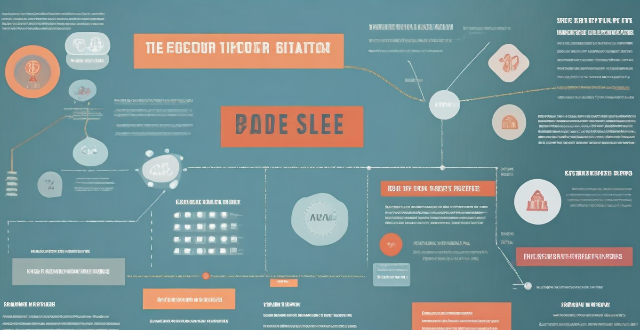
How long does it typically take for an economy to recover from a recession ?
Recovering from a recession is a complex process that can take several months to multiple years, depending on various factors. The initial phase involves emergency measures to stabilize the economy, followed by stabilization and early recovery phases where economic growth resumes. In the late recovery phase, the economy approaches its pre-recession trend growth rate, and in the post-recovery phase, it fully returns to its long-term growth trajectory. The actual timeline can differ significantly based on specific circumstances, but historical data suggests that past recoveries often took around 3-5 years.

What is the ideal percentage of income to save for wealth growth ?
This text discusses the importance of saving a portion of one's income for wealth growth and explores factors such as personal financial situation, financial goals, lifestyle choices, and income level that determine the ideal savings rate. It also provides general guidelines for saving, including starting small, increasing gradually, and aiming for at least 20% of income.

How do competitive sports contribute to the growth of a country's economy ?
Competitive sports significantly contribute to a country's economic growth by boosting tourism, creating jobs, generating media and advertising revenue, diversifying the economy, improving social welfare, enhancing urban development, and attracting foreign investments. Major sporting events not only provide temporary employment but also stimulate long-term infrastructure development and technology innovation. Moreover, they foster national unity and health benefits, indirectly contributing to economic stability. Overall, competitive sports are instrumental in showcasing a country's potential on a global scale, leading to numerous economic advantages.

How do I invest my money wisely for long-term growth ?
Investing wisely for long-term growth involves setting financial goals, creating a diversified portfolio, considering risk tolerance, investing for the long-term, and monitoring investments regularly.

What is the relationship between energy prices and economic growth ?
The interplay between energy prices and economic growth is multifaceted, with each influencing the other in various ways. High energy prices can impede economic expansion by escalating production costs, diminishing consumer purchasing power, and fostering inflation. They might also spur investment in alternative energies and drive resource reallocation towards efficiency, counterbalancing some of their immediate negative impacts. Conversely, robust economic growth often amplifies energy demand, propelling prices upwards unless compensated by enhanced supply or technological advancements that boost efficiency. This intricate relationship underscores the importance of strategic policy interventions to manage energy pricing dynamics for sustainable economic development.

How can sports events be leveraged to promote economic growth and development in local communities ?
Sporting events have long been recognized as a powerful tool for promoting economic growth and development in local communities. By attracting visitors, generating revenue, and creating jobs, sports events can have a significant impact on the local economy. In this article, we will explore some of the ways in which sports events can be leveraged to promote economic growth and development in local communities: 1. **Attracting Visitors:** Sports events can attract tourists from all over the world, who may stay in local hotels, eat at local restaurants, and visit local attractions. These visitors will spend money on tickets, food, souvenirs, and other items, which can generate significant revenue for the local economy. 2. **Generating Revenue:** The sale of tickets to sporting events can generate significant revenue for local communities. Additionally, sports events often attract sponsors and advertisers who are willing to pay for the opportunity to associate their brand with the event. 3. **Creating Jobs:** The preparation for and hosting of a sporting event requires a large number of workers, including security personnel, ticket takers, concession stand workers, and more. These jobs can provide employment opportunities for local residents and help to reduce unemployment rates. 4. **Stimulating Economic Development:** Sports events can stimulate economic development by encouraging investment in infrastructure and promoting the growth of related industries. For example, the construction of a new stadium or arena can create jobs and stimulate economic activity in the surrounding area. Additionally, the growth of industries related to sports, such as sports tourism and sports marketing, can provide new opportunities for economic growth and development.
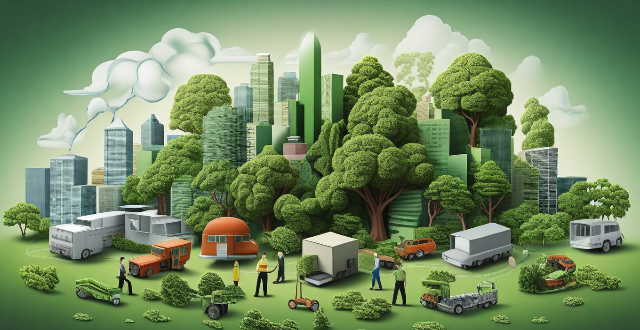
How do climate commitments impact economic growth and development ?
The impact of climate commitments on economic growth and development is multifaceted, with both positive and negative aspects. On the positive side, these commitments stimulate innovation in renewable energy sources and energy efficiency, create new markets for green products and services, improve public health by reducing air pollution, and enhance international cooperation. On the negative side, there are transition costs associated with shifting from fossil fuels to renewable energy sources, potential job displacement in traditional industries, trade-offs between environmental protection and economic growth, and unequal distribution of benefits and costs. Despite these challenges, prioritizing sustainability can lead to long-term economic growth while protecting the environment for future generations.